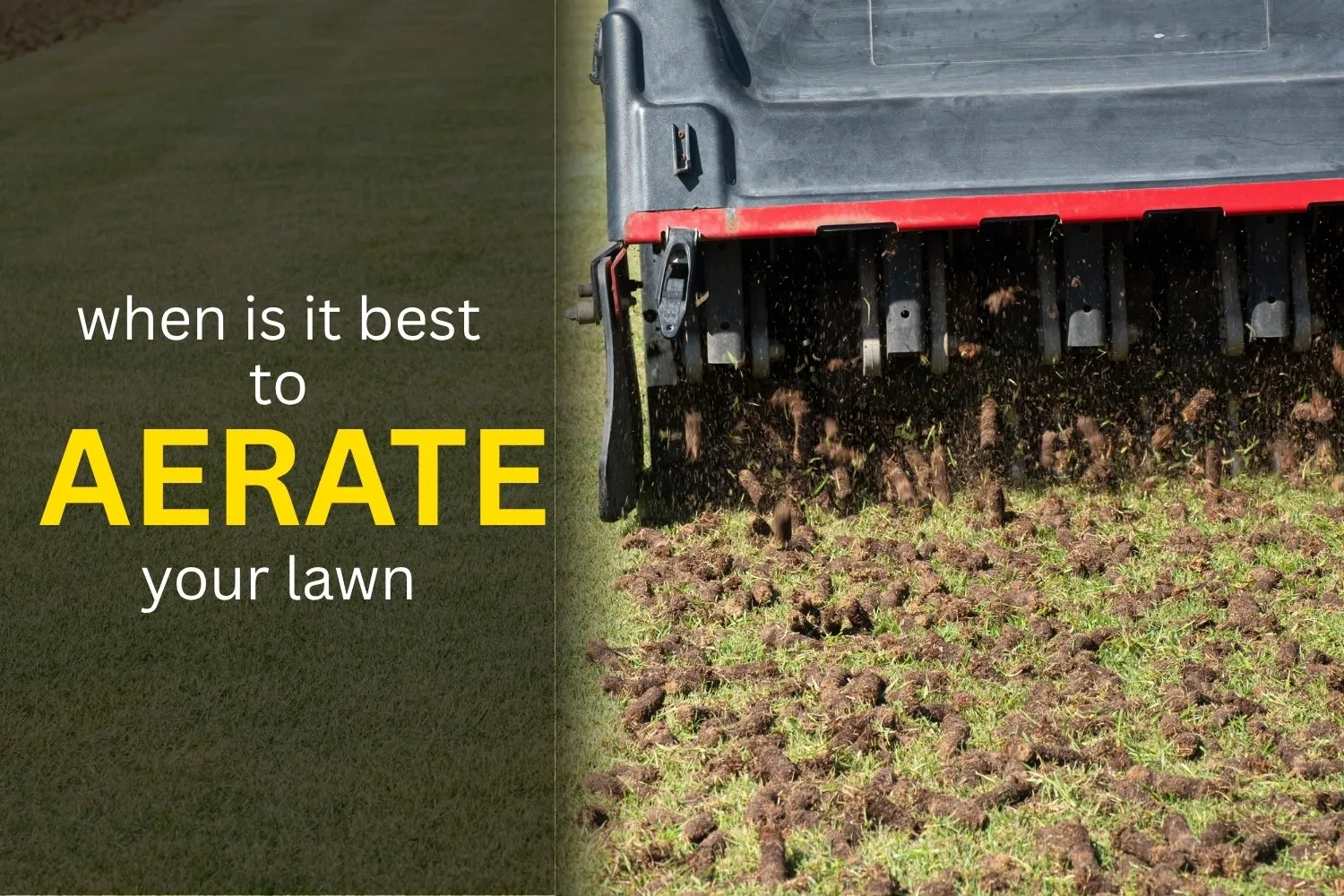
A lush, green lawn does not grow by luck. It takes care and planning. One key step many overlook is lawn aeration. Soil becomes compact over time. Foot traffic, lawnmowers, and weather press the soil down. When this happens, roots can’t get air, water, or nutrients. That’s when the lawn starts to suffer. Brown patches form. Grass thins out. Growth slows.
Lawn aeration creates small holes in the ground. These holes allow air, moisture, and nutrients to move freely to the roots. Health improves. Grass grows stronger. If you skip aeration, your lawn struggles.
But many homeowners ask, when is it best to aerate your lawn? The answer depends on the grass type, soil condition, and climate. Timing affects results. Aerating at the wrong time brings less benefit or harm. Aerate at the right time and your lawn rewards you.
Here, we will discuss the best time for aeration lawn, the signs your lawn needs help, and how to do the job right. It uses real words, short sentences, and no fluff. This is a guide you can use now.
Why Lawn Aeration Is Essential for Every Lawn Owner
You want your lawn to look healthy. But compact soil keeps roots from growing deep. Roots need air. They also need water and nutrients. When the ground gets too tight, grass becomes weak. That’s when problems show up.
Aerating fixes that. By using aerators for lawns, you break up compact soil. You create space for roots. That improves everything. Water gets in better. Fertilizer reaches deeper. Even the microorganisms in soil work better. The grass becomes rich, thick, and strong.
No matter how good your soil starts, it changes over time. Rain, snow, walking, and mowing affect it. That’s why lawn aeration should not be a one-time thing. It should be part of your lawn care plan.
When Is It Best to Aerate Your Lawn Based on Grass Type
Now let’s answer the main question: when is it best to aerate your lawn? The first factor is your grass type. There are two main types: warm-season and cool-season grasses.
Warm-season grasses include Bermuda, Zoysia, and St. Augustine. These grow best in southern regions. The best time to aerate them is late spring to early summer. That’s when they grow fastest. Aerating during this time helps them recover and spread.
Cool-season grasses include Kentucky Bluegrass, Fescue, and Ryegrass. These grow best in northern regions. The best time to aerate them is early fall. That gives roots time to grow deep before winter sets in. You can also aerate in early spring, but fall works best.
Matching aeration with the growing season gives the lawn power to heal fast. The holes made during aeration cause some stress. If the lawn grows actively, it fills in the holes quickly.
Key Signs That Show Your Lawn Needs Aeration
Not sure when to aerate? Look for signs. Grass tells you when it struggles.
- Water pools in spots after rain.
- Soil feels hard when you press a screwdriver into it.
- Grass thins out in high-traffic areas.
- Roots grow sideways, not deep.
- Lawn turns brown even after watering.
- You see more weeds than usual.
These signs show the soil is tight. When air and water can’t reach the roots, the grass suffers. You need to open the soil. That’s where aerators for lawns help.
When you see these symptoms, don’t wait. Aerate while your grass is still active.
How to Aerate Your Lawn the Right Way
You now know when is it best to aerate your lawn, but you must also know how to aerate your lawn properly. It’s not hard, but details matter.
First, water the lawn a day before. Moist soil makes the process easier. Don’t aerate dry or muddy lawns. Next, choose the right aerator. There are two types:
- Spike aerators push holes using solid spikes.
- Core aerators pull small plugs of soil from the ground.
Core aerators work better. They remove plugs, which relieve pressure. Spike tools push soil sideways, which adds more compaction.
Move in straight lines. Overlap a little. Go over compact areas twice. After aeration, leave the plugs. They break down in a week. Add fertilizer or overseed after aerating. That’s when your lawn absorbs best.
Choose the Best Aerators for Lawns
Many tools claim to be aerators for lawns, but not all work well. Choose based on your lawn size.
For small yards, use manual core aerators. They’re simple. You press down and pull soil out. They take time but cost less.
For medium lawns, use push models. These have wheels and hollow spikes. They cover more space faster.
For large yards, rent a power aerator. These machines do the job fast. Some local stores rent them by the hour or day.
Avoid cheap spike sandals. They look fun, but they push soil down. That defeats the purpose. Always pick tools that remove plugs, not just poke holes.
Best Time for Aeration Lawn
Spring
Spring feels fresh. The snow melts, and green shoots pop up. But is spring the best time for aeration lawn? It depends.
For cool-season grasses like Kentucky bluegrass or fescue, early spring can work if the soil isn’t too wet. But be careful. Spring weeds love open soil. Aeration may give them an easy start.
For warm-season grasses like Bermuda or zoysia, wait. Aerating too early can weaken the grass before it starts growing.
Use spring for a light check-up. Walk the lawn. If it feels firm and drains poorly, light aeration helps. But if weeds are a concern, skip it.
Summer
Summer brings heat, and grass shifts into survival mode. This is not the ideal time for cool-season grasses. The heat causes stress, and holes in the soil only add more.
However, warm-season grasses peak during summer. If your lawn grows well in hot weather, early summer is your green light. The grass bounces back fast and fills in the holes.
Use caution. Water your lawn deeply before and after aeration. Avoid dry or scorching days. Make sure your grass grows actively before aerating.
Fall
If you ask experts when is it best to aerate your lawn, many say fall. Why? Because fall offers the perfect balance. The weather cools, rain returns, and grass still grows strong.
Cool-season grasses benefit most from fall aeration. The roots grow deep, and there’s less weed pressure. After summer stress, aeration brings recovery.
Use aerators for lawns in early fall, six to eight weeks before the first frost. This gives the grass time to heal. Add seed and fertilizer after aeration for best results.
For warm-season lawns, fall may be too late. The grass begins to sleep. Aerating now could cause damage, not growth.
Winter
Winter seems quiet. The ground freezes, and grass takes a break. This is not the best time for aeration lawn.
Frozen soil blocks tools. Holes do not stay open. Grass does not heal until spring. Aerating in winter brings no benefits. Instead, it can harm the lawn.
Use winter to plan instead. Check your soil. Sharpen tools. Get ready for spring or fall, depending on your grass type. Patience pays off.
Common Lawn Aeration Mistakes to Avoid
Even with good intent, mistakes happen. Avoid these to get better results.
- Don’t aerate dry soil. Water the day before.
- Don’t aerate when grass is dormant.
- Don’t rush. Take your time and cover the whole area.
- Don’t skip fertilizing after aeration.
- Don’t use spike shoes. They harm more than help.
Follow proper steps. Treat your lawn with care. That’s how you get results.
What to Do After Aerating Your Lawn
After you use aerators for lawns, take advantage of the open soil. This is the perfect time to feed your lawn. Add fertilizer. Overseed if needed. Water daily for a week. Avoid mowing for a few days.
The plugs on the lawn break down over time. Let them stay. They return nutrients to the soil. You’ll see new growth in days. Grass thickens. Roots grow deep. Color improves.
Aeration is not the last step. It’s the beginning of recovery. Treat the lawn well afterward for lasting change.
How Often to Aerate for Best Results
Once a year is enough for most lawns. If your soil is sandy, once every two years may work. But if your lawn has clay soil or sees heavy foot traffic, aerate twice a year.
Some aerate in spring and fall. That’s fine for cool-season grasses. Just avoid summer or winter for them. For warm-season lawns, once in late spring is perfect.
Too much aeration can also hurt. Stick to a plan. Watch your lawn. It tells you what it needs.
Benefits of Aeration
Many think lawn aeration only helps the grass. But it does more. It boosts soil health. It reduces thatch. It keeps pests and fungus away. Roots grow deep, so the lawn survives heat and drought.
Aerated lawns need less water. They resist weeds better. They stay green longer. Over time, your yard becomes the best on the block. And that adds to your property’s value.
Aeration gives long-term gains. Don’t see it as a chore. See it as an investment.
Call BlueFrog Services Today for Lawn Aeration That Works
Don’t wait for your lawn to struggle. Contact BlueFrog Services now. Their team understands your soil. They use trusted aerators for lawns. They answer your questions and fix compacted ground fast.
Want the best time for aeration lawn based on your location? They give advice based on experience. Want to skip DIY stress? They do the work for you. Let them take care of lawn aeration, so you enjoy a green, thick lawn all season long.
Your lawn speaks. Listen to it. And let BlueFrog Services bring it back to life.
